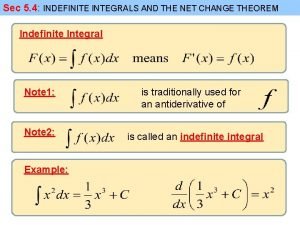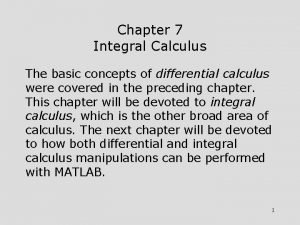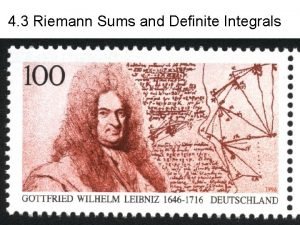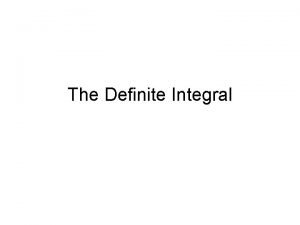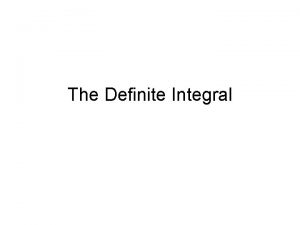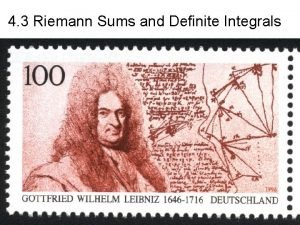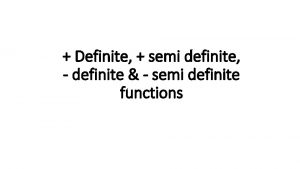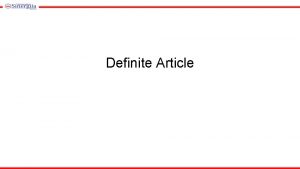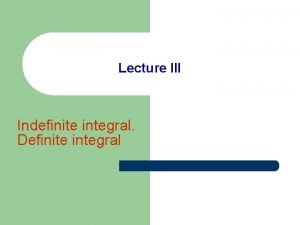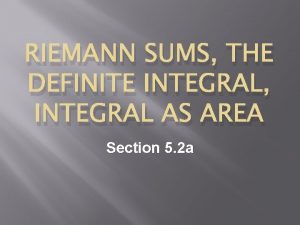Section 4 2 The Definite Integral THE DEFINITE










- Slides: 10

Section 4. 2 The Definite Integral

THE DEFINITE INTEGRAL If f is a continuous function defined for a ≤ x ≤ b, we divide the interval [a, b] into n subintervals of equal width Δx = (b − a)/n. We let a = x 0, x 1, x 2, x 3, . . . , xn = b be the endpoints of these subintervals and we let be any sample points in these subintervals, so that lies in the ith subinterval [xi − 1, xi]. Then the definite integral of f from a to b is

REMARKS The symbol ∫ is called an integral sign. In the notation , f (x) is called the integrand, and a and b are called the limits of integration; a is the lower limit and b is the upper limit. The symbol dx is called the differential is all one symbol. The procedure of calculating an integral is called integration.

THE RIEMANN SUM The sum from the definition of the definite integral is called a Riemann sum after the German mathematician Bernhard Riemann.

NET AREA If f (x) ≥ 0 (that is, the graph lies above the xaxis), gives the area under the curve. If the graph of f (x) lies both above and below the x-axis, then the definite integral gives the net area (the area above the x-axis subtracted by the area below the x-axis); that is

THE MIDPOINT RULE If we are approximating a definite integral, it is often better to let be the midpoint of the ith subinterval. This results in the Midpoint Rule.

BASIC PROPERTIES OF THE DEFINITE INTEGRAL

CONSTANT MULTIPLE AND ADDITION/SUBTRACTION PROPERTIES

INTERVAL ADDITIVITY PROPERTY

COMPARISON PROPERTIES 6. If f (x) ≥ 0 for a ≤ x ≤ b, then 7. If f (x) ≥ g(x) for a ≤ x ≤ b, then 8. If m ≤ f (x) ≤ M for a ≤ x ≤ b, then
